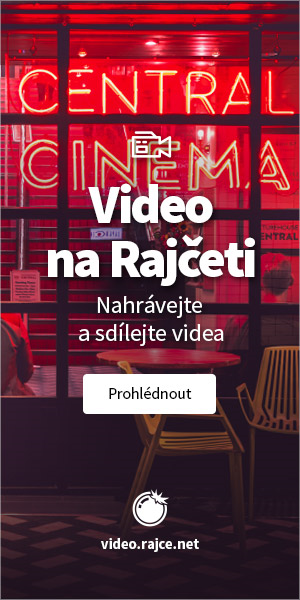2017-07-30 - The Spanish Synagogue, Prague
Název
2017-07-30 - The Spanish Synagogue, Prague
Popis
SPANISH SYNAGOGUE
The Spanish Synagogue is the most recent synagogue in the Prague Jewish Town.
Built in 1868 for the local Reform congregation on the site of the 12th-century Altschul, which was the oldest synagogue in the Prague ghetto.
It was called the Spanish Synagogue for its impressive Moorish interior design, influenced by the famous Alhambra. The building was designed by Josef Niklas and Jan Bělský, the remarkable interior (from 1882–83) by Antonín Baum and Bedřich Münzberger.
František Škroup, the composer of the Czech national anthem, served as organist here in 1836-45.
Permanent exhibitions:
The History of the Jews in Bohemia and Moravia, Part 2
This exhibition deals with the history of the Jews in the Bohemian lands from the reforms of Joseph II in the 1780s to the period after the Second World War.
It highlights the gradual advancement toward greater equality and emancipation for Jews in Austria-Hungary, describes the foundation of the Czech-Jewish and Zionist movements, and profiles the most important Jewish entrepreneurs, scientists, writers, musicians and artists (including Franz Kafka, Sigmund Freud and Gustav Mahler). It also deals with the redevelopment of the Prague Jewish Town, Jewish sites of Bohemia and Moravia, and the history of the Jewish Museum in Prague. Special focus is on the Shoah of Jews from Bohemia and Moravia, and the Terezín ghetto.
From the Reforms of Joseph II to the Granting of Equality to Jews in 1867
The Bohemian lands were part of the Habsburg Empire at the end of the 18th century. The gradual development of Jewish emancipation is reflected mainly in the archival documents and small period prints that are on display in the exhibition. Portraits of prominent figures, together with examples of their works, highlight traditional Jewish learning, enlightenment, education and science.
A separate display case focuses on attempts at reforming religious services. In the 1830s, these attempts centred around the Old Shul, where some of the most prominent representatives of Jewish enlightenment and science were active as preachers. The composer of the Czech national anthem, František Škroup, was choirmaster here between 1836 and 1845.
Assimilation and Zionism
For a considerable portion of the Jewish population, the culmination of the emancipation process meant complete assimilation. In the Bohemian lands, this involved German assimilation at the outset, both in terms of language and culture. In the exhibition, this is illustrated primarily by the books produced by Moses Israel Landau and the Pascheles and Brandeis publishing houses. The issues of Czech assimilation are reflected in a display case focusing on the Czech Jewish Movement.
A wave of anti-Semitism at the end of the 19th century put in doubt the possibility of settling the Jewish question by means of assimilation. It was at this time that the Jewish national movement – Zionism – was formed. The exhibition provides information about the cultural, social and sporting activities of Zionist associations and organizations. The contribution of the Jews to the development of industry is represented by a number of prominent, and still thriving, enterprises, which were founded by Jewish entrepreneurs (for example, a match factory in Sušice, Moser Glass Works in Karlovy Vary, ČKD Factory in Prague).
The Czechoslovak Republic (1918–1938)
The next part of the exhibition is in the west gallery. Czechoslovakia acknowledged Jewish nationhood and Jews played a major role in the political and economic life of the country. The exhibition features prominent Jewish figures – writers and poets who wrote in German and Czech, as well as artists and scientists.
The Holocaust of Bohemian and Moravian Jews (1939–1945) and the History of Jews in Czechoslovakia after 1945
Archival sources and photographs from the Museum’s collections document the persecution of the Jews in the Nazi Protectorate of Bohemia and Moravia, the mass deportations, and life in the Terezín ghetto. The last two display cases contain a brief outline of the history of Jews in Czechoslovakia after 1945 and a look at the country's relations with Israel.
The Prague Ghetto, Jewish Sites and Jewish Museums in Bohemia and Moravia
In the south gallery you can become acquainted with the history and clearance of the Prague ghetto and with the preserved Jewish sites of Bohemia and Moravia. The remaining part of the exhibition includes a brief introduction to the history of the Jewish museums in Prague and Mikulov in the period before the Second World War, the war-time Central Jewish Museum and the related activities of the Jewish Museum in Prague from 1945 until the present day.
Synagogue Silver from Bohemia and Moravia
Located on the upper floor, this permanent exhibition features a representative selection of more than 200 of the most valuable silver artefacts from the museum's collections.
Most space is given over to Torah ornaments – shields, pointers, finials and crowns. Also on display are charity boxes, pitcher and basin sets for hand washing, Shabbat spice boxes, Kiddush cups, Hanukkah and Shabbat candles, and charity collection trays.
Období
Statistiky
- 48 fotek
- 1 se líbí
Fototechnika
Canon PowerShot SX610 HSNastavení
Vytvořte si fotodárky
Z alb a fotek na Rajčeti nebo i z disku počítače si můžete snadno a rychle vytvořit různé fotodárky pro sebe nebo své přátele.

